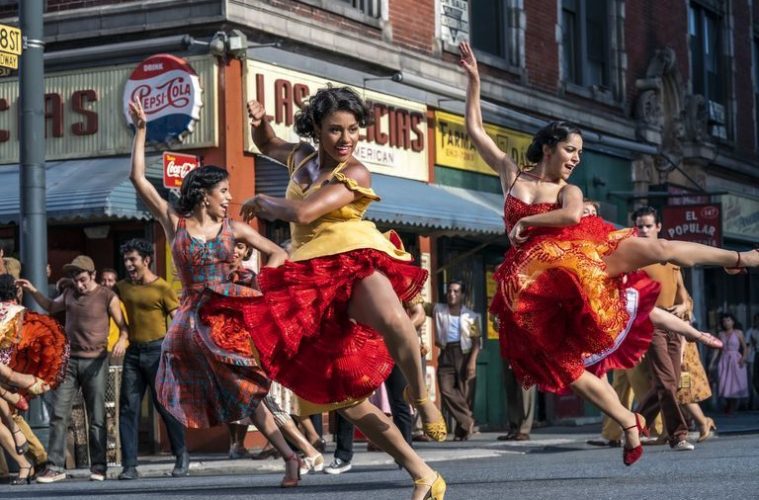
If you’ve ever wanted to see the man behind Jaws, E.T. and Indiana Jones tackle a musical, you’re in luck. Even if you never knew you wanted that, you’re still in luck, because Steven Spielberg’s West Side Story is a straight-up blast.
With the help of co-writers Tony Kushner and Stephen Sondheim, Spielberg has dusted off Arthur Laurents’ source material, once a Broadway play, and of course, Robert Wise’s beloved musical from 1961. He’s given it a modern update, addressing themes of racism and gentrification in new ways, but the basic formula remains the same.
As his adaptation swings around the flying limbs of gangs including the Sharks, the Jets and everyone caught in the middle, Spielberg not only shows off his craft, he also seems to be having a great time. Liberated from the confines of historical drama and Oscar-bait, it seems the filmmaker is giddy to be back in the mix, so we can forgive him for going overboard with a few scenes.
When we first meet the Jets, Lt. Schrank (Corey Stoll) lectures them about fighting with the Sharks, but he also mentions a slum-clearance project that will remove both gangs. The first shot of Manhattan is a nightmare, a mountain of rubble, dust and blood that will soon become a playground for hipsters and their precious coffee shops.
The film then shifts from de-saturated ruin to rich, Kodachrome color. The shift is dazzling for many reasons, mainly for what it says about Manhattan. At first, the town looks like a war zone. For those who live there, however, it’s a land of opportunity, work, dance and life. Maria (Rachel Zegler) lives on the West Side, along with her sister, Anita (Ariana DeBose), and her sister’s boyfriend, Bernardo (David Alvarez). They head to the dance, where Maria locks eyes with Tony (Ansel Elgort).
It’s love at first sight, and the two begin a Romeo & Juliet-style romance– one a Jet and one a Shark, one White and one Puerto Rican. It’s hot, humid and there’s uncertainty in the air. Will Tony work up the courage to see Maria again? Will they meet on her balcony? Who can stop them? Who can stop these gangs from fighting? The familiar story plays out against the backdrop of a tight-knit but extremely fraught community, as love blossoms and death looms.
This will no doubt be a breakout performance for the impossibly tender and talented Zegler, who was discovered on You Tube. However, it’s cinematographer Janusz Kaminski -who shot War Horse and Lincoln– who stuns in his first musical production. Who knew cameras could move like that or hues could pop like that?
With the late Sondheim’s songs, and Spielberg’s direction, everything snaps into place as effortlessly as a spool in a chain-link fence. There are Busby Berkeley-inspired musical numbers, a cast of thousands and characters bursting into song and dance at every moment. It’s Spielberg at his best; the scale and narrative scope are large and the audience–lost in a haze of nostalgia–will likely finish it in tears.
Spielberg even made efforts to remove the racist undertones of the ‘61 version casting Latin actors and adding a more multidimensional take on Puerto Rican life in New York. Despite under-performing at the U.S. box office this weekend (at $10.5 million), West Side Story is worth a theater visit (and however long the wait to stream). It’s a vividly produced collage of performance, cinematography, romance and tragedy that fans of the original movie will love, maybe even more than its predecessor.



